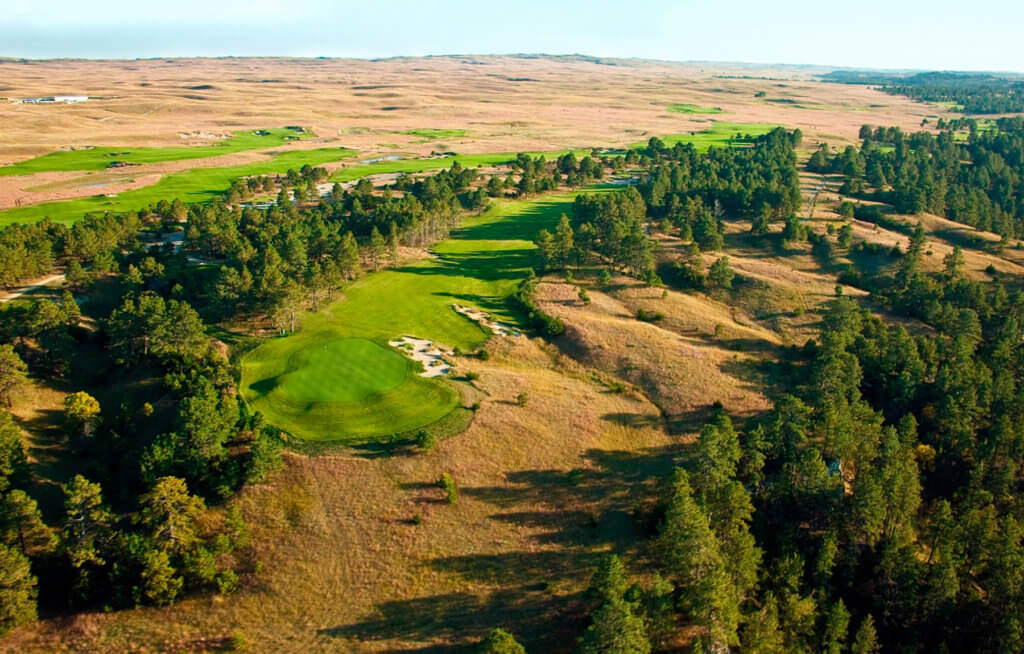The Prairie Club Story: From One Man’s Pipe Dream to the Golf Purist’s Dream Destination
May 11, 2020 —
Story taken from Home on the Range book, published in 2016.
Paul Schock stood on the rim of the Snake River Canyon in the Sandhills of Nebraska, surveying the land around him. To his right, a steep cliff cascaded down to the serene Snake River, where just that morning he’d sampled some of the best trout fishing of his fifty-year-old life. To his left, a sea of rippling prairie, spotted with endless sand dunes, spread out as far as his eye could see. Other than the whispers of wind weaving through the grass and the soft murmurs of stream drifting up from below, all was silent in the sacred Sandhills.
There, in the Middle of Nowhere, USA, a dream was born.
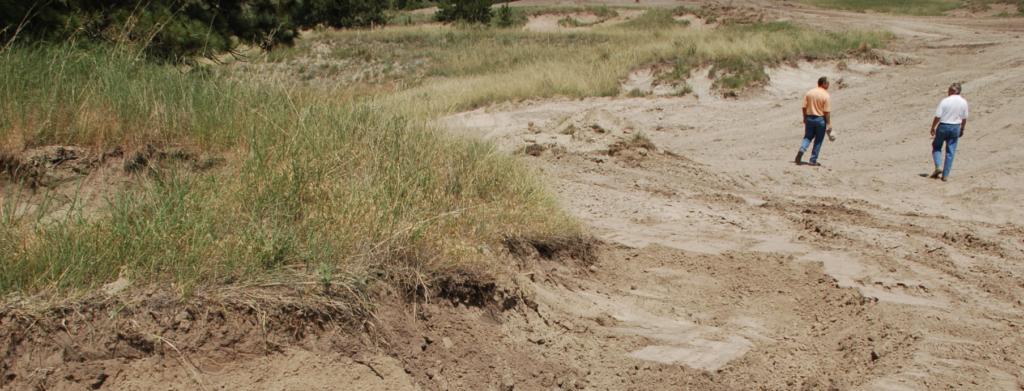
From the moment he set foot on the secluded Sandhills territory, Schock knew he wanted to build a golf club there.
“The land seemed to be teasing and taunting me,” he says, “daring me to pull out my golf clubs right there and then.”
But Schock’s new dream would have to wait to be realized–a full seven years, in fact. From first inkling to final product, The Prairie Club proved to be many years in the making. But to Schock–and all the people who have made The Prairie Club possible–the time, sweat, and lost sleep that went into creating the club was well worth it. Because today, the project has transformed from idea to reality–from one man’s pipe dream to the golf purist’s dream destination.
Origins
The Prairie Club story begins, first and foremost, with Schock’s passion for the game of golf. A true enthusiast since his youth, Schock was always active in the sport, starting with school tournaments in his native South Dakota and eventually leading to expeditions to amateur tournaments at clubs all across the country. The more he traveled, the more he fell in love with the beauty of golf–not only the game, but also the land upon which it was built. Without even realizing it, Schock had developed a keen interest in golf course architecture.
But there was one club in particular that captured a part of Schock’s heart: Sand Hills Golf Club, which had come up with a revolutionary approach to the way golf courses were developed in the United States. While most clubs start with a place where there is a good golfing population, Sand Hills started with a place where there was good golf: the remote yet gorgeous Sandhills of Nebraska. The club’s motto seemed to be, “Let’s build it and see if people come.” And, against all odds, people came.
Schock came, too. In fact, he joined Sand Hills without ever having seen the course; he simply trusted the raving reviews he had heard about it from many close friends. Driving to the club for the first time in 1996, he became enamored of both the region and the philosophy upon which Sand Hills was founded.
Three years into his membership at Sand Hills, Schock was speaking to the club’s head professional and general manager, Jim Kidd, with whom he had become friends. They were talking about their shared interest of fly fishing when suddenly something snagged in Schock’s brain. “Jim, haven’t I heard something about fly fishing in Nebraska?” he asked.
Kidd paused for what felt to Schock like a full five minutes. “It was like he was trying to decide if he liked me enough to tell me the secret I knew he had,” Schock recollects.
Finally, his mind made up, Kidd looked Schock in the eye and gave him what turned out to be a life-changing gift. “Paul, I’m going to introduce you to my friend Cleve.”
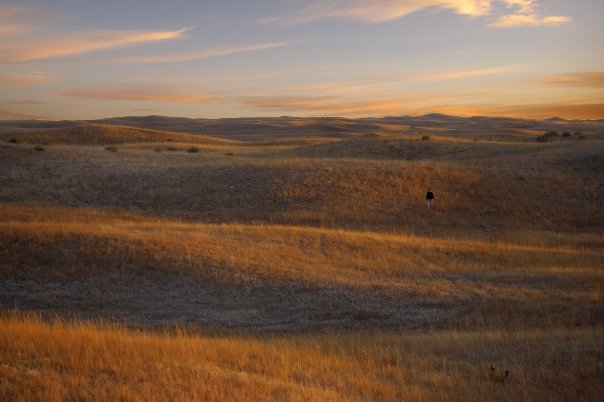
Planning
In 1998, Kidd brought Schock to the Snake River Canyon near Valentine, Nebraska, where a retired doctor named Cleve Trimble owned a private ranch that boasted some of the best fly fishing in the country. Schock was deeply impressed, not only by the incredible fishing but also by the grandeur of the land itself, and he quickly hit it off with Trimble.
Soon, Trimble was sharing with Schock both his fishing access and a vision for his 2,500-acre ranch. Having rescued the land from heavy grazing, Trimble hoped to use it in an environmentally friendly way: by transforming it into a world-class golf club.
Schock, a former venture capitalist who already had memberships at Sand Hills and other destination clubs, quickly became fascinated with the idea. He knew from his experience with Sand Hills that the model could work if done well; in fact, he felt that Trimble’s isolated territory would actually be an advantage, as the pilgrimage required to get there would allow golfers to experience the game in its purest state. Schock felt he had another advantage, too: the idea of a semi-private business model, which would allow for anyone to play the club periodically, regardless of their ability to afford a membership, yet which would still provide a truly valuable membership for those who wanted to play it more frequently.
Schock and Trimble spent the next three years spitballing ideas back and forth. But it wasn’t until Trimble received an unfavorable cancer report from his doctors that he decided to offer Schock–who he knew would be a good steward of his land and legacy–to buy two-thirds of his ranch.
They agreed that the timing for the project, which would be called The Prairie Club, was finally right. Schock purchased 1,700 acres of Trimble’s ranch, and their nebulous dream began to take shape.
But Schock had another idea for the club. Shortly after purchasing Trimble’s ranch, he began to negotiate the purchase of the property to the south of his, which featured a forest of ponderosa pines, so that the club could offer courses that were completely different in aesthetics and landscape.
Thus ensued two long years of negotiations with both the local Sawyer family and the Nebraska Board of Educational Lands and Funds, each of whom owned a parcel of the land needed to build the second course. The Sawyer matriarch was particularly reluctant, loathe to sell land that had been in her family for so long. However, after Schock expressed his desire to not only care for the land, but also use it to provide numerous opportunities for the community, she agreed, and Schock was able to move forward with his vision.
Early Work
Research was important to Schock. Once he had the land he needed, he spent a good chunk of time studying other business models, conferring with trusted advisers, and traveling around the country to see good (and bad) course operations in action. Schock credits his business partner Chad Hatch, his attorney Steve Sanford, and his late friend and colleague Mark Amundson as being especially influential in helping him sculpt the overall structure for the club.
Soon Schock was ready to start selecting architects for the courses. As a longtime enthusiast of golf course design, he already had an idea of who he’d like to hire.
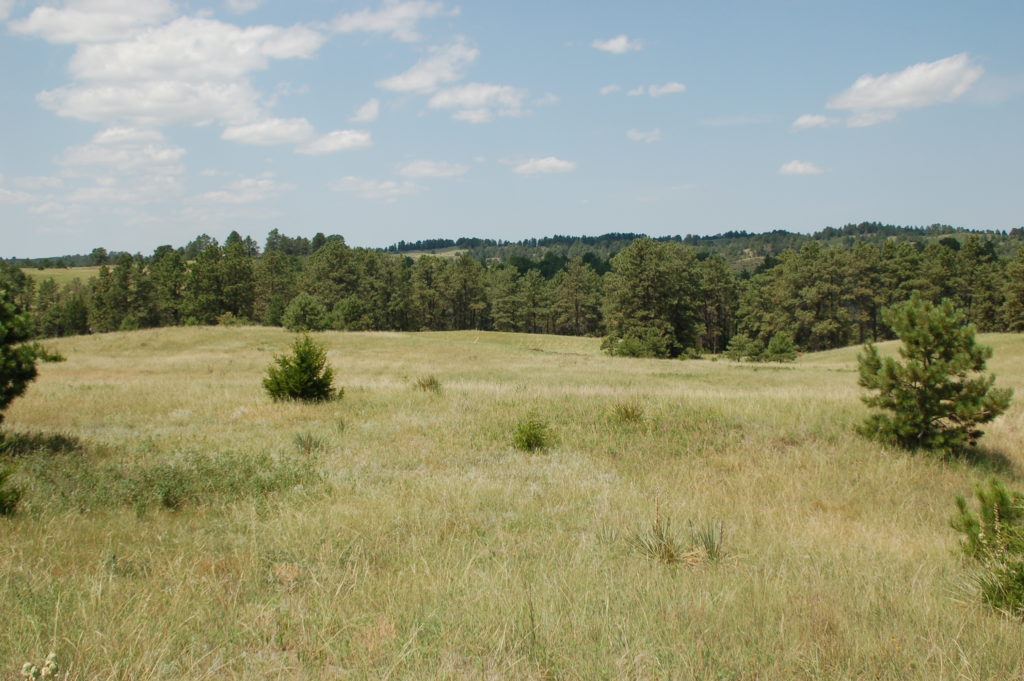
First up was the internationally acclaimed architect Graham Marsh. As a founding member of the South Dakota golf club Sutton Bay, Schock had previously been introduced to Marsh, who designed Sutton Bay’s course. Schock was a fan of his professional personality and his work both regionally and beyond, and he was thrilled when Marsh agreed to jump on board.
The other man Schock had in mind was the PGA Tour’s Tom Lehman, who was also gaining clout as a golf course architect. Schock had played and admired some of his courses, but he was even more impressed by what he’d heard of his character–both Schock and Lehman had reputations as men of strong faith. “I knew he was someone I wanted to talk to,” says Schock.
What Schock didn’t know was how quickly he’d be able to talk to him. Schock sent Lehman an email on a Monday afternoon. On Tuesday morning, he got a call from Lehman himself. By Friday, the two were sitting together on a plane bound for Valentine, where they would tour the property and begin building what would prove to be a very close partnership.
With the two primary architects chosen, Schock and his team were able to start formulating a master plan for the layout of The Prairie Club. “Our landscape was huge, so I knew it would take a lot of time to get it right,” says Schock. “But I knew both Graham and Tom would make the commitment.”
Drafting the design for the two championship courses, plus a third par-three one, proved to be an enormous challenge that took over a year to complete. After designating general areas to the three courses, Schock delegated architects for each one.
Schock put Marsh in charge of the 18-hole course that is now known as the Pines. Taking advantage of the ancient ponderosa forest situated on the border of the Snake River Canyon, Marsh created a course marked by diversity and undulation. He says of his design, “It is my dream that the Pines Course will be viewed as having 18 distinct holes, each with its own character, that seduce and lure players into returning over and over again for the sheer joy of the challenge and the experience.”
Meanwhile, Lehman was put in charge of the other 18-hole course, which is now called the Dunes. Collaborating with his partner Chris Brands, Lehman routed a course that maintained the landscape’s dramatic sand dunes and changes in elevation. “It was not a matter of finding 18 great holes,” says Lehman. “There are dozens, maybe hundreds of them. The battle was to overlook that which was extremely good and hold out for those fairways and greens that would be truly epic.”
The third and final course, the 10-hole par-three now named the Horse Course, was designed by Gil Hanse, the renowned architect behind the 2016 Olympic golf course in Rio de Janeiro. Spinning off the basketball game by the same name, Hanse crafted the Horse Course with no tee boxes so that players could, quite literally, call the shots. By placing the course on the rim of the Snake River Canyon, just a stone’s throw from the front doors of the main lodge, Hanse aimed for a course that would, in his words, “inspire creativity and place fun as the highest priority.”
While the architects worked on routing their courses, Schock was busy building a management team while also trying to find financing for The Prairie Club–a task he’d been used to as a venture capitalist. Starting with his old firm, Bluestem Capital, Schock spent two years convincing investors to lend The Prairie Club their financial support–often by bringing them to the land itself, which did most of the talking for him. “We’ve never had trouble getting people to invest once we took them there,” says Sanford, who was instrumental throughout the fundraising process. “We’ve never taken anyone there who has not been awestruck.”
Eventually, Schock established a team he trusted and secured the funding he needed. Construction could now finally begin.
Construction
“Just about everything that could go wrong did go wrong.” So says Schock of The Prairie Club’s first forays into construction.
In addition to problems acquiring water permits and the like, the team faced major weather issues, unforeseen expenses, and internal conflicts. Extreme flooding caused delays in course construction. Misallocation of funds required Schock to return to his investor group three times to request more money. And mistakes in the hiring process led to difficulties in management. “We learned we had to hire people who fit into that culture,” says Schock. “Living in a small Western town isn’t for everyone.”
The accumulation of problems began to present Schock, a man of God, with a true test of faith. Until that point, Schock had felt the Lord’s hand blessing the entire endeavor. Now, though, he was beginning to doubt: “It was a continuing question of ‘Lord, I thought you were in this. Is this ever going to work?’”
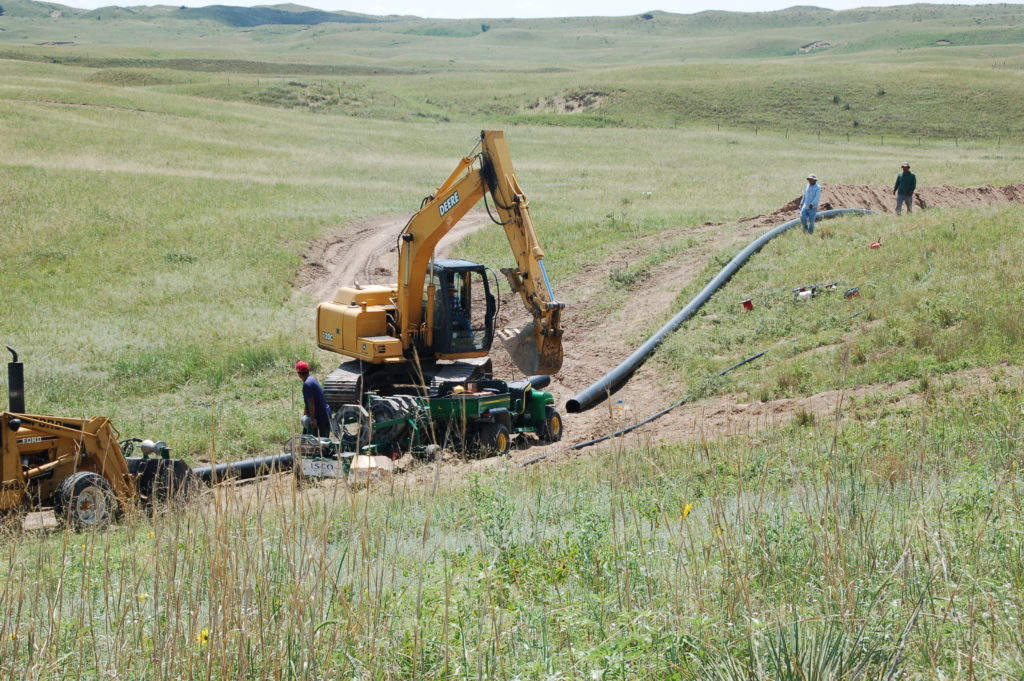
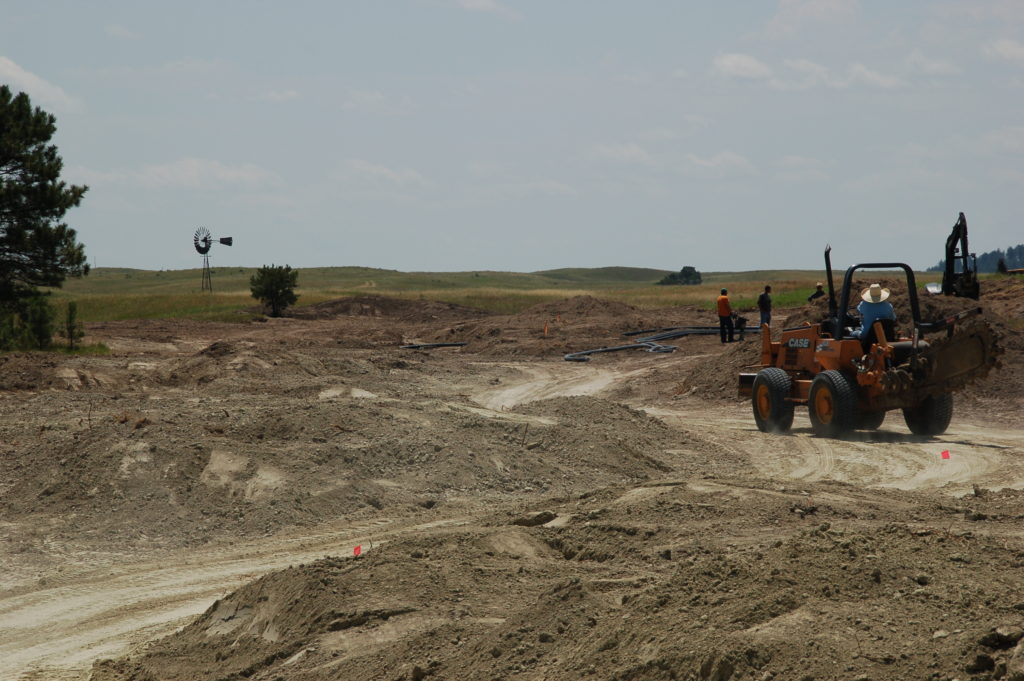
It was. Because each time a problem surfaced, a solution rose to meet it. “I really prayed my way through this from start to finish,” says Schock. “It seemed like every time a door needed to open, that door would open, and then the next one, and then the next one.”
Despite all the issues, Schock insists that things did generally go according to plan. The architects and shapers did phenomenal work forming the courses. Thanks to the Sandhills’ perfect grass-growing soil, the courses grew in extremely well–much better than most courses do at first. The facilities (including the main lodge, four guest cabins, and other minor buildings) were built without a hitch. And, most importantly, The Prairie Club was already getting great press.
Not only did the media love the concept of the club, but the local community also accepted the newcomer with open arms. The Prairie Club tried hard to be a valuable addition to the Valentine area, supporting local causes and offering a variety of jobs to residents. In return, the community showed its loyalty by coming to both work and play at The Prairie Club. A surprising number–about 40 people from Cherry County–even bought memberships, adding what Schock calls “a great flavor to our place.”
In fact, Schock believes that without the support of Nebraskans, The Prairie Club could not exist. “We’ve been adopted as one of their own,” he says, noting that the sentiment is mutual. With a slight chuckle and shake of the head, he adds, “Here’s something I thought I’d never say: I am now a diehard Cornhusker fan!”
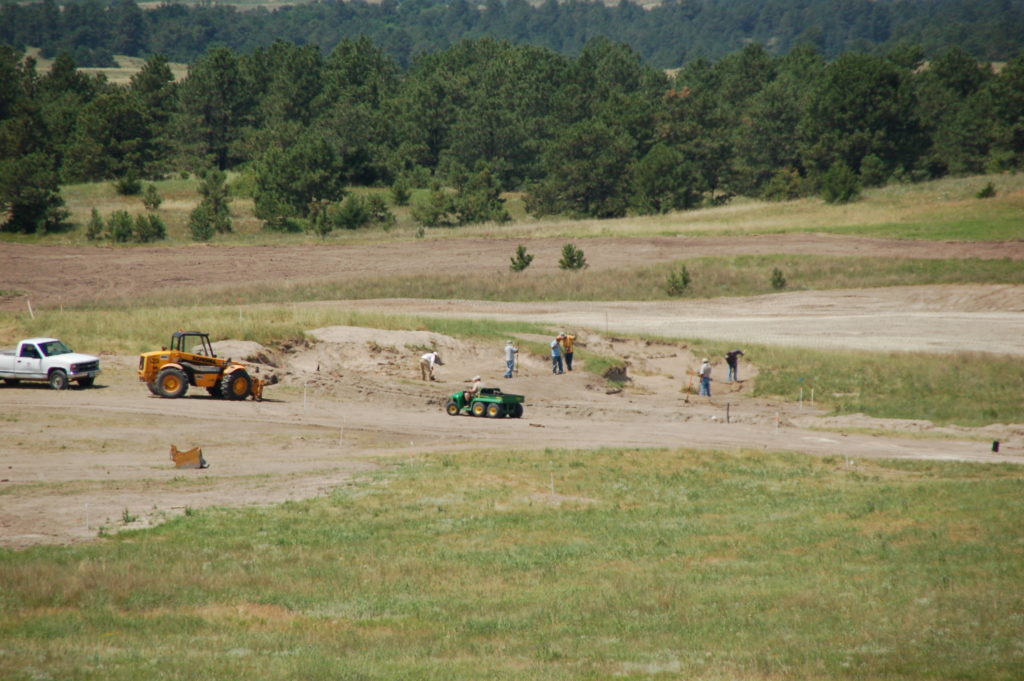
Opening the Club
In general, The Prairie Club received a highly favorable response upon opening. Schock attributes this to the club’s high-quality product offerings, particularly its dining and lodging, as well as its overall philosophy that golf is meant to be minimalist and fun. People appreciated The Prairie Club’s wide fairways, big greens surrounded by grass, and challenging yet playable holes. “What we’ve done out there fits the land,” Schock explains. “It’s inviting. It brings people into the landscape without detracting from it.”
While The Prairie Club was met with great initial success, some problems persisted. Profits weren’t rolling in as quickly as the team would’ve liked. “When you do something this unique, it takes time for people to find it and start fitting it into their lives,” says Schock.
Gaining revenue took longer than everybody had hoped, but it did happen–though not until the team made some drastic changes in management.
It was the middle of the season in 2012, and The Prairie Club was again struggling to make ends meet. Schock gathered a few key team members and asked them one simple question: “Is this really going to work?”
They came to the conclusion that it would–but only if they refocused their efforts. “We went back to the drawing board, took a thorough look at the business, and decided to do something really remarkable: We turned the operations over to Ross,” says Schock.
He was speaking of then-grounds superintendent Ross Buckendahl, who had been involved in the club from the very beginning and whose leadership had been vital to the club’s success. Indeed, the move to make him in charge of operations proved to be key in turning the tide for The Prairie Club. With his new hiring and training methods, combined with revamped sales and marketing efforts led by Schock’s son Kyle, The Prairie Club was able to actually improve service levels while saving money. In fact, from 2012 to 2013, the club not only took out $1 million in expenses, but also added an extra $1 million in revenue.
“We originally had the vision that this culture would be small-town, friendly, faith-based,” says Schock. “In our efforts to try to make this club work, we had drifted from that in some ways. But with Ross’s leadership and others’ involvement, we took it back.”
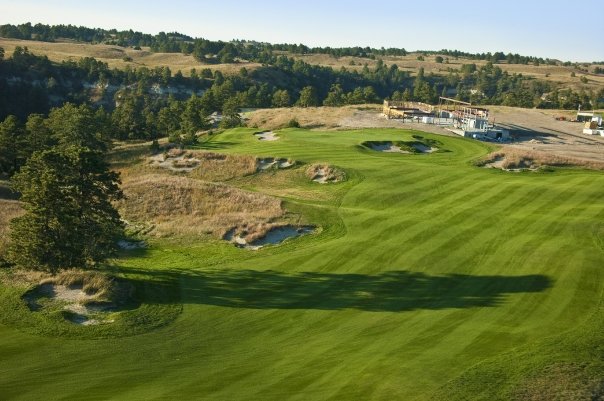
Today and Beyond
Today, The Prairie Club has really begun to hit its stride. Now that it has gotten its initial issues under control and has established a highly capable crew who work together well, The Prairie Club is thriving more than ever before.
“We’re really fortunate to have gotten to this point,” says Hatch, “where we’re able to talk about growth projects and start to making enhancements to our product. It’s really getting to be fun now, and just like I tell people, another eight-year ‘overnight success!”
Most recently, the club added a second practice green along with a new “Bunkhouse” lodging unit adjacent to the four cabins along the rim of the Snake River Canyon. It has also expanded its kitchen, members’ bar area, and outdoor patio. Numerous tweaks and changes to both the Pines and Dunes Courses are in the works or on the list to be tackled soon.
Reflecting back upon his journey to get The Prairie Club to the place it is today, Schock realizes, “Our early ‘challenges’ were really more about expectations. It took longer than we thought, but we did get there.”
Fortunately, Schock and his team were able to combat those challenges with good problem-solving strategies, plenty of prayer, and, above all, a stunning place that spoke for itself.
“The single biggest challenge we’ve faced is getting people to visit,” claims Schock. “The single easiest thing is getting them to come back.”
